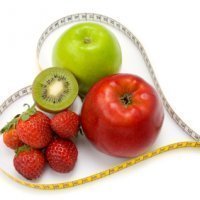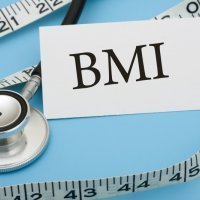What is Protein and The Top 10 Protein High Foods You Should Eat According To Nutritionists
Protein is an essential building material for our body. Every cell, tissue and organ includes protein. In addition to the building features protein may also be a source of energy. And in case there is an excess of protein, liver gradually converts it into fat, which is deposited as a reserve in our body. Out of 22 amino acids vital for a human being, 13 can be synthesized independently from the existing construction material, and 9 can only be received with food. During the process of absorption proteins are divided into amino acids, which in turn are available in different parts of our body to perform their core functions. Proteins (as amino acids) are included to our blood as parts of the hormone system, regulating water and acid-base balance and affecting growth and development of the body. Depending on their specialization, proteins have different functions in our organism. Transport proteins, for example, are engaged in the delivery of vitamins, fats and minerals. There are also proteins that fight infections as antibodies to various diseases.
Recommended protein daily need for adults is 0.8 grams per 1 kg of body weight. However, you should calculate your own daily value according to the tables for calculating ideal body weight. The actual weight of the person in this case is not considered due to the fact that amino acids are used for cell mass of the body, rather than fat. According to the rules of nutrition, protein foods should be about 15% of total calories in the daily diet. But this amount may vary depending on the type of human activities and the state of person’s health. A person should increase consumption of proteins during illness, especially in the recovery period, during heavy physical labor, in the cold season, when the body spends more energy for heating, during intensive growth and development, during sport events, as well as preparation to them. Protein requirement can be reduced during warm seasons (this is due to the chemical processes that occur in our body when it is influenced by heat), with age (the older we are, the less protein we need), for people who suffer from violation of protein digestibility, etc.
Interaction Of Protein With Nutrients
Everything in nature is interconnected, and so are all the elements of our body. Proteins, as a part of the overall system cooperate with other elements like vitamins, fats and carbohydrates. And in addition to the simple interaction, proteins are also involved in transformation of one substance into another. As for protein absorption, vitamin C is an essential component for this process. That is why every gram of protein takes 1 milligram of vitamin C to be digested and absorbed.
Protein Deficiency
Protein deficiency can hardly bring any harm to a person who consumes lots of calories and amino acids. However, people with poor diet, especially from the third world countries, often experience protein deficiency, which leads to weakening of their immune system, muscle and heart diseases. Young children who need to consume increased doses of protein are the first in the group of risk. Symptoms of protein deficiency are weakness and lack of energy, low resistance to various infections, nervous and cardiovascular system disorders, slowing growth and development in children.
Dietary Toxicity of Protein
Extreme and long-term consumption of protein may result in kidney problems or osteoporosis. The tolerable upper intake of protein is not set.
Products High in Protein
1. Chicken
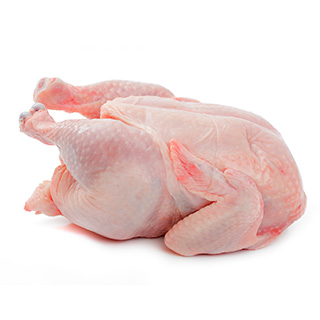 Types of Chicken High in Protein (100g):
Types of Chicken High in Protein (100g):
| Chicken, Broilers Or Fryers, Light Meat, Meat Only | |
| 100 g | 1 chicken, bone and skin removed (147 g) |
| Protein: 23.2 g (46% DV) |
Protein: 34.1 g (68% DV) |
A single organic pasture-raised chicken breast can provide our body with 70% of its daily protein need. In addition, it comprises a sufficient amount of vitamins A, B1 and B2. Chicken meat also contains niacin, which supports work of our heart, regulates cholesterol level and is involved in development of digestive juice.
2. Tuna
| Tuna, Fresh, Yellowfin | |
| 100 g | 1 oz, boneless (28 g) |
| Protein: 24.4 g (49% DV) |
Protein: 6.9 g (14% DV) |
A 100 gram serving of tuna contains 19% of our daily protein need. Plus, it is rich in omega-3 fats, which help to reduce the risk of cardiovascular diseases. In addition, omega-3 complex improves functioning of eyes and brain, decreases arthritic pain, has anti-inflammatory effects and helps reduce weight.
3. Cod
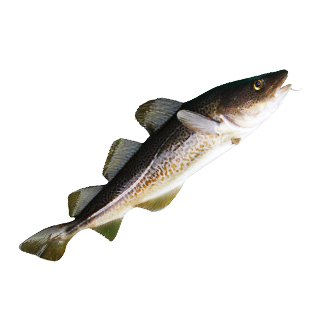 Types of Cod High in Protein (100g):
Types of Cod High in Protein (100g):
| Cod, Atlantic | |
| 100 g | 1 fillet (231 g) |
| Protein: 17.8 g (36% DV) |
Protein: 41.1 g (82% DV) |
If you eat a portion of cooked cod fillet, you will get half of your daily protein value. That is why nutritionists recommend regular eating of cod meat and liver to adults and children under three years. Younger children are advised to consume stewed cod fillets with milk. Such meal will provide them with natural calcium and vitamins.
4. Soybeans
.jpg) Types of Soybeans High in Protein (100g):
Types of Soybeans High in Protein (100g):
| Soybeans, Mature Seeds | |
| 100 g | 1 cup (186 g) |
| Protein: 36.5 g (73% DV) |
Protein: 67.9 g (136% DV) |
Soybeans are high in lots of nutrients like B vitamins, vitamins A, C and E. They also contain a larger amount of minerals: calcium, potassium, iron, iodine and zinc. One cup of cooked soybeans comprises as much protein as 100 grams of cod. That is why vegetarians find soybeans a great substitution for meat. Moreover, these beans can bring huge benefits to people suffering from a variety of diseases. Products made of soybeans are recommended to patients with gastritis, diabetes and heart diseases.
5. Salmon
 Types of Salmon High in Protein (100g):
Types of Salmon High in Protein (100g):
| Salmon, Coho, Wild | |
| 100 g | 1 fillet (198 g) |
| Protein: 21.6 g (43% DV) |
Protein: 42.8 g (86% DV) |
Salmon is a little less high in protein than cod and soybeans. However, only 120 grams of this sea delicacy can provide our body with its daily requirement of vitamin D and half of the daily value of calcium, iron, magnesium, and vitamins B12, B6, and more. A portion of salmon contains 1.9 grams of omega-3 fats. They improve functioning of our brain and nerves, develop memory, support flexibility of arteries, veins and strengthen heart muscles.
6. Beef
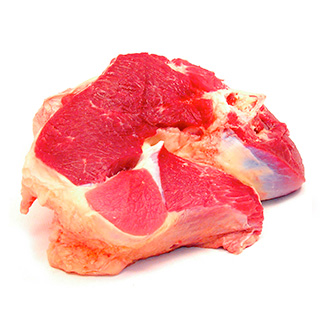
| Beef, Tenderloin, Steak, Separable Lean Only, Trimmed To 1/8 Fat, Choice | |
| 100 g | 1 lb (454 g) |
| Protein: 22.2 g (44% DV) |
Protein: 100.6 g (201% DV) |
A 100 gram serving of cooked lean beef contains almost 50% of our daily protein value.
Beef is also high in vitamin B12, which is involved in absorption of iron in our body. It helps deal with exhaustion and is beneficial for patients with iron-deficiency anemia. Doctors recommend eating up to 200 grams of this meat to men who have high level of bad cholesterol. They have found that this diet helps reduce cholesterol level by approximately 20%.
7. Shrimp
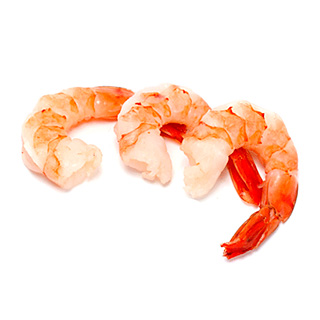 Types of Shrimp High in Protein (100g):
Types of Shrimp High in Protein (100g):
| Crustaceans, Shrimp, Untreated |
| 100 g |
| Protein: 20.1 g (40% DV) |
100 grams of steamed shrimps can provide our body with 40% of its daily protein need. Furthermore, shrimps are good for our heart. They increase the level of “good” cholesterol in the blood and thus reduce the level of the “bad” one. In addition, vitamin B12 comprised in shrimps has a positive effect on our cardiovascular system. It destroys harmful molecules that damage blood vessels and obstruct blood flow.
8. Spinach
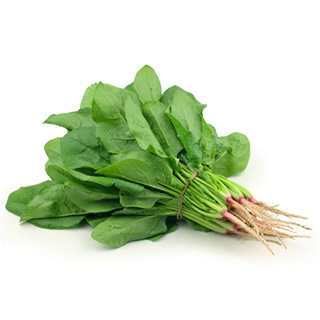
| Spinach | |
| 100 g | 1 bunch (340 g) |
| Protein: 2.9 g (6% DV) |
Protein: 9.7 g (19% DV) |
One cup of cooked spinach includes 11% of our daily protein value. Its valuable nutrients and fiber stimulate processes of toxins’ reduction. Spinach can also normalize metabolism, increase hemoglobin level in blood and recharge our body with energy. This vegetable should be included to the diet of patients with diabetes, hypertension, disorders of nervous system, even pregnant women and children, because it is very well absorbed by our body.
9.Asparagus

| Asparagus | |
| 100 g | 1 spear, medium (5-1/4 inch to 7 inch long) (16 g) |
| Protein: 2.2 g (4% DV) |
Protein: 0.4 g (1% DV) |
Asparagus is an excellent source of fiber, minerals and vitamins. A cup of boiled asparagus can give your body 9% of its daily protein need. Green asparagus is considered to be especially rich in vitamins, but the white one also contains many useful elements. This vegetable has very powerful antioxidant and anti-cancer effects, which are known as the most important beneficial properties of asparagus.
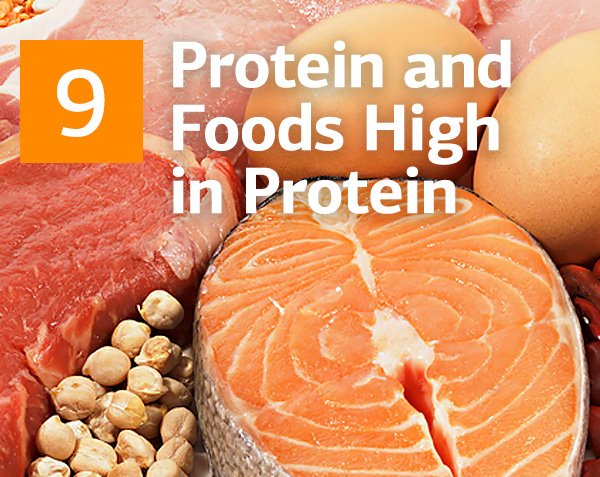
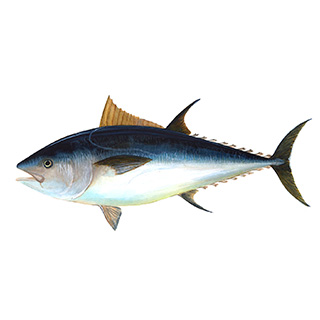 Types of Tuna High in Protein (100g):
Types of Tuna High in Protein (100g):



